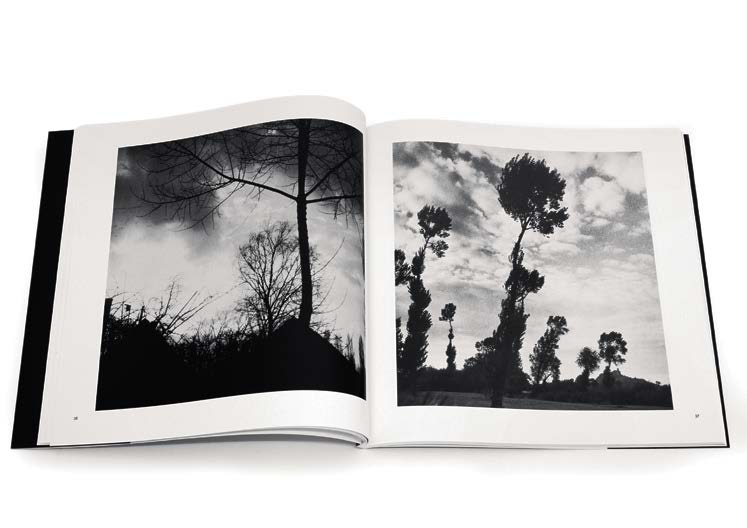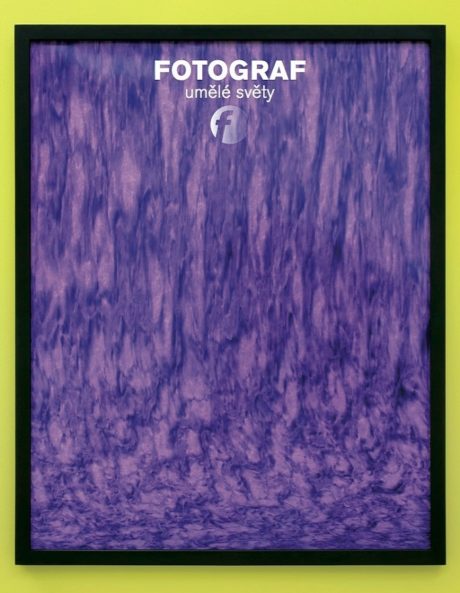Jiří Toman
The Return of the Outsider Genius
The East Bohemian Gallery in Pardubice has done excellent work to commemorate the underappreciated artist Jiří Toman (1924–1972). The gallery‘s venue at the house U Jonáše has recently exhibited his collages, drawings, small art objects, and above all, photographs – 220 items in total. As curator Vít Bouček aptly summed up the main issue, “Toman‘s native town of Pardubice was not only the main focus of his photographic oeuvre, but also a source of anguish, a factor oppressively restricting his versatile talent and the possibilities of its realization.” As Toman himself once put it: “I circle around a tiny orbit with all of my minuscule powers. I am not part of the current of history – instead I seem to languish in some kind of a stagnant cesspool.”
Toman made his professional mark in the media of short animated films and book illustration. It was only retrospectively that he would enter the history of 1940s to 1960s photography – in ways that are all the more surprising for their delay. It would turn out to be art historians – in particular Jaromír Zemina – who organized the revelatory posthumous retrospective exhibitions (Brno 1973, Prague 1984) which established Toman as a cult artist. The theorist and curator Anna Fárová also contributed to this reappraisal (Roudnice nad Labem 1992, Pardubice 1993). It was not only their commentary that provided an outline of Toman’s oeuvre – it was also their choice of negatives from the artist’s estate, and the scale and sequence in which they had them printed.
Eyewitness Reservations
The new selection is a sober interpretation of Toman’s legacy. Vít Bouček, the editor of the accompanying catalogue, solicited a contribution from the psychologist Vlastimil Šebek, whose essay Remembering Jiří Toman (Vzpomínka na Jiřího Tomana) reveals that more than one alleged piece of conceptual art originated as an impromptu prank: “The series titled Hry s rámem a křeslem (Play with Frame and Armchair) was created simply because Jiří arrived at our weekend retreat just as we were outside the house, washing and scrubbing all the furniture, which had been covered in mud during a flood shortly before. He merely documented us having fun, goofing around and posing for him. […] Similarly improvised and impromptu are his panoramic pictures taken from the landing of the staircase in the Tyrš Park.”
Jiří Toman also worked in square format. He pursued the classical genre of the urban landscape, which had long attained the value of historical documentation, as well as the purely visual effect of a snapshot, which no amount of criticism can strip of its charm. The book manages to capture the broad scope of his
photographic interests in brief summary by focusing on the lesser known photographs. In this way, it is in keeping with the artist’s estate, acquired by curator Vít Bouček for the East Bohemian Gallery, especially in terms of the body of negatives.
The Outlines of Advent
The focus of Bouček’s installation, as with others before him, relies on new prints. He nevertheless accompanies the enlarged prints of various motifs connected by the dates 1955–1966 with the artist’s original New Year cards. The postcard-size format is an admission that the other items on exhibition are at odds with the artist’s approach to the outlines of Advent. By publishing single reproductions of the given pictures, Bouček indicates that Toman did not take series of shots in order to print the sequences in full (as they had been hitherto reprinted) but rather in order to find the best shot, the one which most fittingly captured the year. Yet the monumentalized sequences of images originally rendered in the letter-size format of New Year cards were what made Toman a Central European pioneer of action art.
A large section of Toman’s work consists of the negatives of panoramic shots of the Labe River region (Polabí). These were created under the influence of Toman’s stint as an assistant to Josef Sudek during his work on the famous book Praha panoramatická / Prague Panoramic (1959). Toman’s vision was more dynamic, both friends were nonetheless able to roam together, precisely since each had a distinctly different manner of photographing. Being a generation older, Sudek did so unhurriedly from the tripod, Toman from the hand. While acting as Sudek’s host and showing him around his native Pardubice, Toman strove to achieve an unposed portrait of the master. Neither on this or other occasions did Toman economize on the steady flow of filmstock through his early 20th century panoramic camera. This was the price he paid for extracting the exposure of decisive moments from a camera equipped with a slow-moving swivel lens.
Together with Martin Dostál, Vít Bouček published the first album of Toman‘s photographs under the aegis of the Prague House of Photography and KANT Publishers (2006). The tonal definition came out too harshly. The present book in turn is too grey in tone and lacks definition. In short, there is no end of Trouble with Toman (see also Fotograf 3/2003 and 5/2005).
Vít Bouček: Jiří Toman. Východočeská galerie v Pardubicích / East Bohemian Gallery in Pardubice, 2013, 100 pages.
#23 artificial worlds
Archive
- #45 hypertension
- #44 empathy
- #43 collecting
- #42 food
- #41 postdigital photography
- #40 earthlings
- #39 delight, pain
- #38 death, when you think about it
- #37 uneven ground
- #36 new utopias
- #35 living with humans
- #34 archaeology of euphoria
- #33 investigation
- #32 Non-work
- #31 Body
- #30 Eye In The Sky
- #29 Contemplation
- #28 Cultura / Natura
- #27 Cars
- #26 Documentary Strategies
- #25 Popular Music
- #24 Seeing Is Believing
- #23 Artificial Worlds
- #22 Image and Text
- #21 On Photography
- #20 Public Art
- #19 Film
- #18 80'
- #17 Amateur Photography
- #16 Photography and Painting
- #15 Prague
- #14 Commerce
- #13 Family
- #12 Reconstruction
- #11 Performance
- #10 Eroticon
- #9 Architecture
- #8 Landscape
- #7 New Staged Photography
- #6 The Recycle Image
- #5 Borders Of Documentary
- #4 Intimacy
- #3 Transforming Of Symbol
- #2 Collective Authorship
- #1 Face


